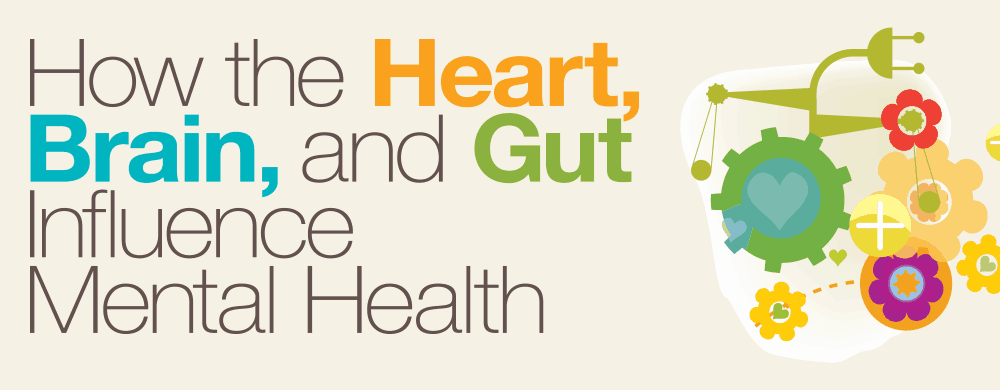
An instinct. A sixth sense, we sometimes say. A gut feeling. Sometimes when we have a decision to make we feel almost overtaken by a recognition of what we should do… or shouldn’t. When reasoning fails, words escape us and yet the instinct persists, we’re often smart to “go with [our] gut” and do what, deep inside, we feel is best.
Then there are times when we act on the desires of our heart, with little regard to rational thought. Especially in love, or in sudden decisions to make a big life change, we say we “listen to [our] heart.”
See? Intuitively we know that not all decisions come from our “head brain,” the mysterious 1.4 kg (3 lb) organ that uses our five senses to control, integrate, and interpret information from the outside world to the rest of the body. We also have a “gut brain” and a “heart brain.” Each of these brains function independently. But there is enough strong evidence to show that they also work together to influence who we are and how we interact with the world around us.
Shouldn’t we be doing what we can to ensure the health of all our decision-making capabilities?
It Takes Guts
In recent years the gut microbiota has become a major topic of research, and what scientists have learned has been astounding. The gut bacteria, often viewed as lowly little creatures, are actually quite sophisticated in their social interactions. In fact, they communicate with one another through electrical signalling and other mechanisms that very much resemble how neurons communicate in the head brain.
Studies show that the role of the gut brain is to monitor and integrate gut functions, but that’s not all. It also forms a link between the emotional and cognitive centres of our three-part brain. Through a two-way communication network linking the head brain and the gut, alterations in the makeup of gut microbiota can have significant effects on our health and well-being – causing a broad range of diseases such as autoimmune and gastrointestinal disorders, inflammation-based illnesses, and mood or cognitive disorders such as depression and learning disabilities.
Heart and Soul
Until the 1990s, scientists assumed, and most of us were taught, that only the head brain sent information and issued commands to the heart and the rest of the body.
Now we know that – not unlike the gut – the heart brain is an intricate network of neurons, hormones, and neurotransmitters that affect our perceptions, mental processes, feelings, and performance in profound ways.
A Team of Three
Although the head, heart, and gut brains work together, they have obvious differences in physical function. They also play different mental and emotional roles. For example, the brain analyzes information and applies logic. In contrast, the heart brain senses the world through emotion and feelings, and our gut brain is used for understanding our identity and who we are in the world.
The gut brain also helps us learn self-preservation by teaching us to follow our instinct – that’s the “gut feeling” we all experience at times. When people feel “normal,” they have an identity. They interact with others and the world around them in their own unique way.
While all health problems and disease conditions bring pain and suffering of various sorts and to varying degrees, only brain disorders can truly change, distort, or in some cases, rob people of their very “essence,” their true identity.
According to recent estimates, about one in five people over the age of 18 suffers from a diagnosable mental health disorder in a given year. Approximately 12 million children under the age of 18 have mental disorders, and depression in adolescents may be as high as one in eight. We also know that the numbers of people with memory disorders are growing yearly in both the elderly and also among middle-aged adults. Indeed, approximately 15–25% of North Americans aged 65 or older have some degree of cognitive impairment. It is estimated that 5.3 million people in the US have Alzheimer’s disease and by 2020 that number is expected to reach 7.1 million, representing a 45% increase in less than a decade.
What’s causing the rise in brain disorders and disease? The culprits include stress, inflammation, vascular dementia, imbalances in the gut microbiota, allergies, undiagnosed thyroid disorders in the elderly, as well as chemicals and pesticides in the environment. In addition, diabetes is an independent risk factor for dementia. Diabetics suffer dementia at double the rate of the healthy population.
Yes, the numbers are sobering. But, there are things we can do to reduce the odds of becoming a statistic.
Watch for future articles on the three brains.














